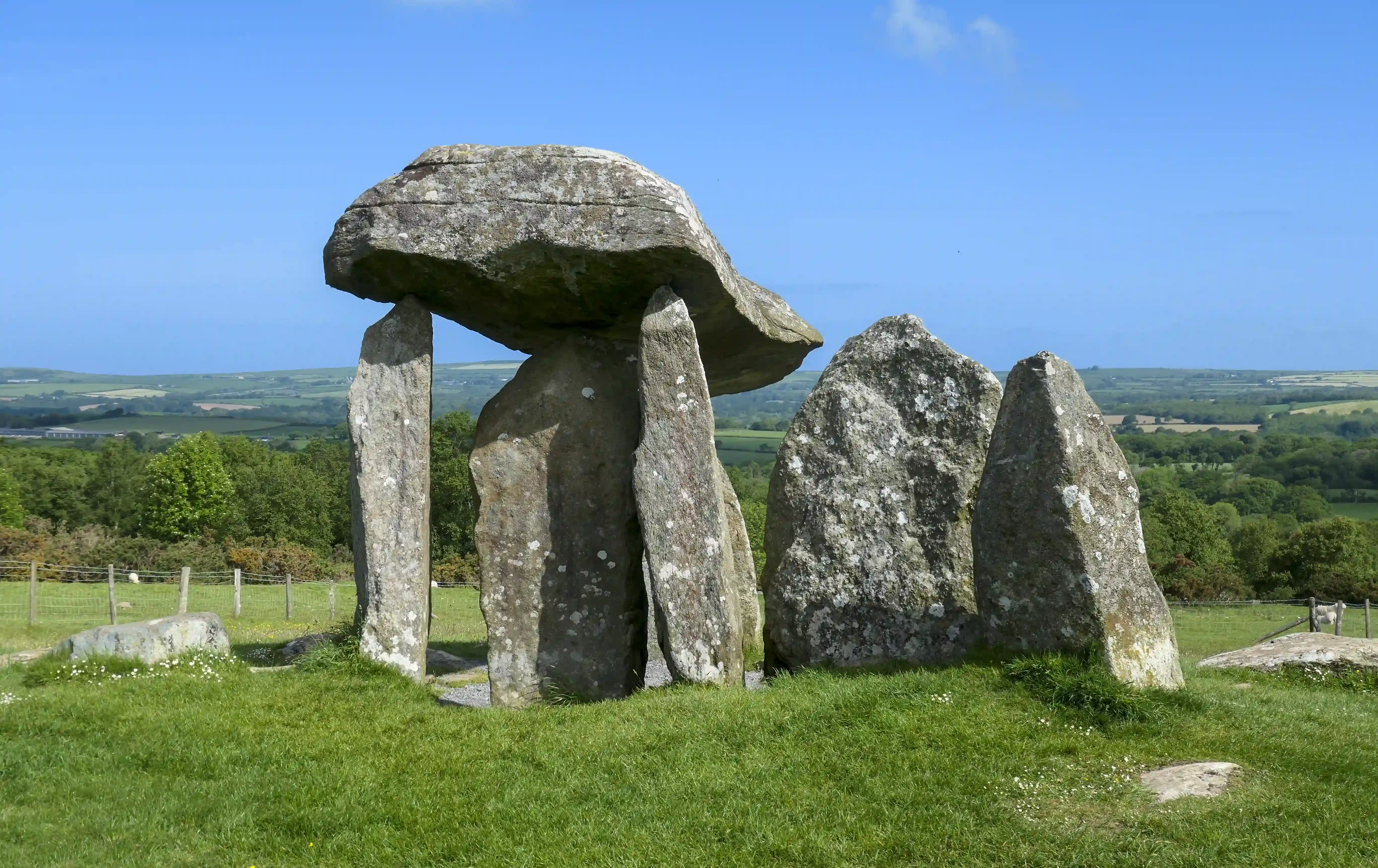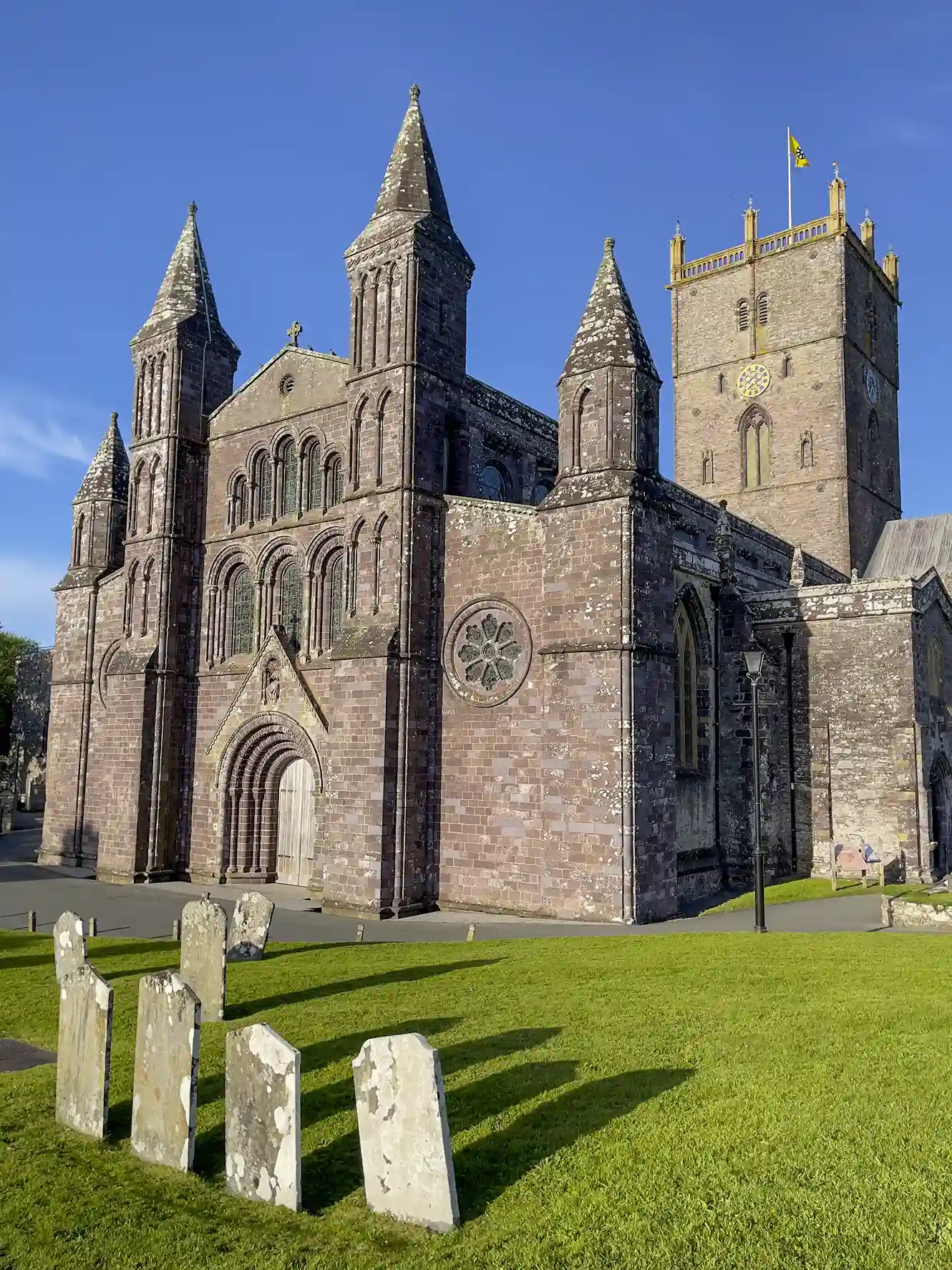Sacred Sites of Wales
Sacred Sites of Wales
Wales, a land steeped in ancient myths and legends, boasts a wealth of sacred sites that reflect its rich spiritual heritage. From prehistoric chambers and standing stones to medieval churches and holy wells, these sites offer glimpses into the beliefs and practices of the people who have inhabited this land for millennia. While Christianity has been the dominant religion in Wales for centuries, traces of earlier pagan traditions and Celtic folklore still linger in many of these sacred places.
Bachwen Cromlech, Clynnog Fawr Dolmen
Located near the village of Clynnog Fawr, this Neolithic dolmen is a significant archaeological site and a testament to the region's ancient past. It is believed to have been used for ritualistic purposes.
Bodowyr Dolmen, Anglesey
This Neolithic dolmen on the island of Anglesey is one of the largest and best-preserved in Wales. It is a significant archaeological site and offers insights into the beliefs of the people who lived in the region over 5,000 years ago.
Carn Ingli Holy Mountain
This prominent hill in Pembrokeshire is steeped in mythology and folklore. It is believed to have been a sacred site for the ancient Druids and is associated with numerous legends and stories.
Llanthony Priory, Brecon Beacons
The ruins of this Augustinian priory in the Brecon Beacons are a testament to its former grandeur and importance. It was founded in the 12th century and is a significant historical landmark.
Lligwy Dolmen, Anglesey
This Neolithic dolmen on the island of Anglesey is another significant archaeological site and a reminder of the region's ancient past.
Mt. Cadair Idris, Wales
This mountain in Snowdonia National Park is steeped in Welsh mythology and folklore. It is said to be the chair of the giant Idris, and legends tell of a lake on the mountain where anyone who sleeps will awaken either a poet or a madman.
Nevern Church, Pembrokeshire
This 12th-century church in Pembrokeshire is known for its well-preserved Celtic cross and its association with several early Christian saints, including St. Brynach.
Our Lady of Cardigan, Wales
Also known as Our Lady of the Taper, this Marian shrine in Cardigan was a popular pilgrimage destination in the Middle Ages. It is believed to have been founded by St. Mary in the 6th century.
Penrhos Feilw Standing Stones, Holy Island
Located on Holy Island off the coast of Anglesey, these standing stones are believed to have been erected in the Bronze Age. Their exact purpose is unknown, but they are thought to have served ritualistic and astronomical purposes.
St. Melangell's Church
Located in the village of Pennant Melangell, this 12th-century church is dedicated to St. Melangell, a 6th-century Welsh princess who became a hermit. It is a place of pilgrimage and is known for its association with the legend of the rabbit saved by the saint.
St. Beuno's Church and Well, Clynnog Fawr
This church in Clynnog Fawr is dedicated to St. Beuno, a 7th-century Welsh saint. It is a place of pilgrimage and is known for its holy well, believed to have healing properties.
St. Cybi's Church, Holyhead, Holy Island
This 13th-century church on Holy Island is dedicated to St. Cybi, a 6th-century Welsh saint.
St. Davids and St. Non's
St. Davids is home to St. Davids Cathedral, the final resting place of St. David, the patron saint of Wales. Nearby is St. Non's Chapel, where St. David is believed to have been born.
St. Winefride's Well, Holywell
A holy well in Holywell, Flintshire, associated with Saint Winefride, a 7th-century Welsh princess who was beheaded but miraculously restored to life. The well is believed to have healing properties and is a popular pilgrimage destination.
Strata Florida Abbey, Ceredigion
This Cistercian abbey in Ceredigion was once a major religious and cultural center in Wales.
Trefignath Cromlech, Holy Island
This Neolithic dolmen on Holy Island is one of the largest and most impressive in Wales.

Martin Gray is a cultural anthropologist, writer and photographer specializing in the study of pilgrimage traditions and sacred sites around the world. During a 40 year period he has visited more than 2000 pilgrimage places in 160 countries. The World Pilgrimage Guide at sacredsites.com is the most comprehensive source of information on this subject.


